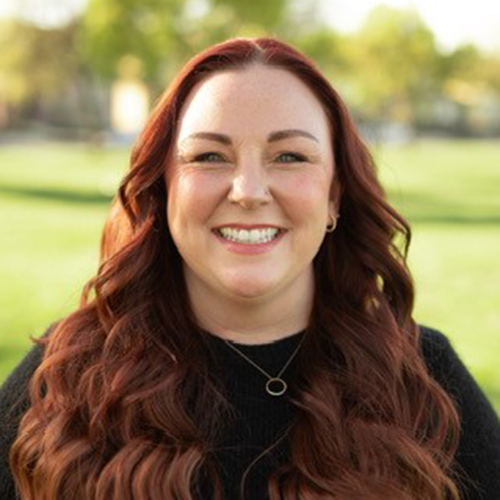Friday, January 26, 2017 | as of 1:57 PM Regional News ET
California Rain Doesn’t Dampen Enthusiasm for Drought Projects
By Keeley Webster
LOS ANGELES — Drought inspired water and wastewater projects in California are moving forward despite record rainfall this year.
Gov. Jerry Brown declared a state of emergency Monday, because of damage caused by flooding and mudslides in many areas of the state.
The declaration came just a week after the U.S. Drought Monitor reported 42% of the state was still suffering drought conditions despite heavy rainfall. “Anyone who has lived through the wet years and many dry years in California knows that we aren’t all of the sudden going to be out of the woods,” said Gary Breaux, the chief financial officer of the Metropolitan Water District of Southern California, a wholesaler that supplies imported water to 28 member agencies.
The California Infrastructure and Economic Development Bank just approved on Tuesday plans for its second bond sale of more than $400 million for water quality projects in less than a year. IBank’s board approved on Tuesday the sale of $450 million in taxexempt revenue bonds for the State Water Resources Control Board’s Clean Water State Revolving Fund. IBank sold $410 million in revenue bonds for the same revolving fund in April 2016.
In addition to bond sales for the State Water Board, IBank, which also serves as a conduit issuer, is generally seeing an “uptick in the number of water projects coming to the bank,” said Teveia Barnes, IBank’s executive director. The IBank board has approved more than $1 billion in loans for water projects since Barnes was named executive director in July 2013 including its Tuesday approval of the State Water Board
sale. “The other action item for the IBank board on Tuesday was Pico Water District coming back to IBank for a second financing with us for a water project,” Barnes said. “The state is now at the point between deferred water projects and deterioration around infrastructure that we need to fix it.” Barnes estimated that just shy of 50% of the projects in IBank’s portfolio are to improve water quality.
James Wawrzyniak, a partner with California law firm Jones Hall, said he expects to see growth in water and wastewater agency bond business at his firm as a result of the infrastructure projects driven by the state’s drought. More than 600 wastewater reuse projects are planned nationally over the next 10 years and the lion’s share are in California, according to Bluefield Research’s report, “Water Market Shifts: 7
Signposts to Watch in 2017″ released this week.
California and Florida account for 36% and 26% of the $11 billion in reuse projects planned over the next decade, according to an earlier report released by Bluefield in September. Those projects are expected to increase the capacity for wastewater reuse by 58% from 2016 through
2026, according to Bluefield, a global water research and analysis firm. “What the drought had done is highlight the deficiencies in the state,” said Erin Bonney Casey, a senior analyst for Bluefield Research. “Drought will come back, so California does need to work
on establishing these kinds of supplies.” Wastewater reuse projects involve treating wastewater for use to irrigate agricultural crops or
parks and sports fields or for drinking water. Projects involving drinking water typically include injecting wastewater treated at a high enough purity level for drinking into underground water reserves for further filtering. The Orange County Water District in California has had such a
system in place since 2008.
The Metropolitan Water District of Southern California is working with the Sanitation Districts of Los Angeles County on a project to treat and purify wastewater and distribute it to groundwater basins across the region. “This is our first venture in developing local supplies as an agency,” Breaux said. MWD completed a feasibility study on Jan. 9 on a project that would produce 150 million gallons of water annually, which is enough to serve 335,000 homes, according to Bob Muir, an MWD spokesman. MWD and the Sanitation Districts plan to begin construction on a demonstration facility this summer.
Metropolitan would take wastewater treated at the Sanitation Districts’ Joint Water Pollution Control Plant in Carson and purify it using reverse osmosis and other processes, Muir said. The water is now treated and discharged into the ocean. The purified water would then be stored in four groundwater basins in Los Angeles and Orange County, allowing for additional filtration. The demonstration facility would produce 500,000 gallons of water a day and allow MWD to test, monitor, and optimize the treatment process. The $2.7 billion projects involves constructing an advanced treatment facility in Carson and laying 60 miles of pipelines to the groundwater basins. IBank’s bond sales for the State Water Board are part of the $1.2 billion in bonding capacity for the Clean Water State Revolving Fund Program approved by the State Water Board last year,
which leaves roughly $340 million more it can issue, according to the staff report to the IBank board.
The proceeds from the green bonds being issued by IBank will go into the state water board’s revolving fund, which provides low-cost loans to municipalities and water agencies for wastewater, stormwater and nonpoint source pollution management system projects as well as
for estuary conservation.
A date has not been set for the $450 million sales, but the bonds are expected to price some time over the next two months, Barnes said.
The money will provide 78 loans to 23 cities, water agencies, and water districts. The bonds will be repaid by the State Water Board using payments the municipalities make to the board. Morgan Stanley & Co. LLC and Bank of America Merrill Lynch are joint senior managers.
Ramirez & Co., Inc. is cosenior manager. Public Financial Management is the financial advisor. Hawkins, Delafield & Wood LLP is bond and disclosure counsel.
The state already used all of the proceeds of the 2016 bonds to finance projects, according to IBank’s staff report. “The IBank board was very pleased to see that the water board was coming back for additional public financing for water projects – and that they had used all the funds from the 2016 bonds,” Barnes said. “The board saw that as being consistent with the importance of water projects in California.” The $410 million in 2016 bonds sold for the State Water Bond’s revolving fund were priced at a coupon rate from 2% to 5% with a final maturity on Oct. 1, 2035, according to IBank’s staff report. Those bonds received acrosstheboard tripleA ratings from the three largest rating
agencies.
© 2017 SourceMedia. All rights reserved.
About the California Infrastructure and Economic Development Bank
IBank was created in 1994 to finance public infrastructure and private development that promote a healthy climate for jobs, contribute to a strong economy and improve the quality of life in California communities. IBank is located within the Governor’s Office of Business and Economic Development and is governed by a five-member Board of Directors. IBank has broad authority to issue tax-exempt and taxable revenue bonds, provide financing to public agencies, provide credit enhancements, acquire or lease facilities, leverage State and Federal funds and provide loan guarantees and other credit enhancements to small businesses. Find more information on our website.
Gabrielle Stevenson
Public Information Officer
Email Gabrielle, HERE
















































